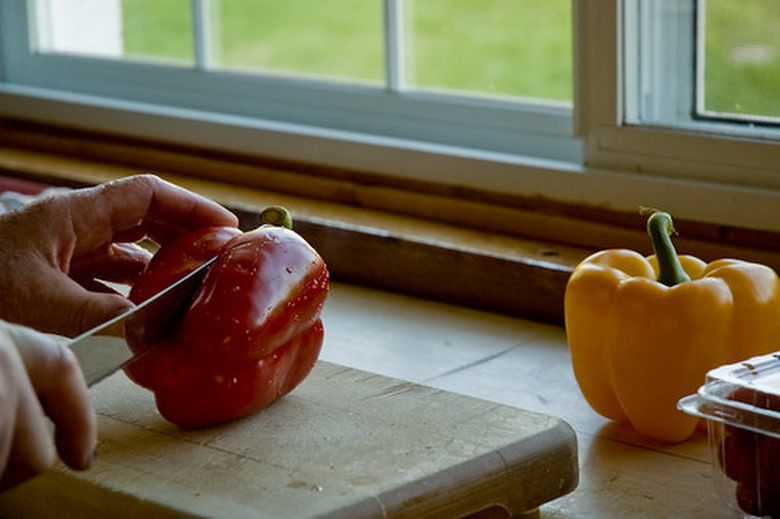When To Plant Peppers
Growing peppers in the home garden provides a fresh supply of juicy fruits brimming with flavor. Fresh peppers are the perfect addition to garden salads and add robust flavor to tomato dishes.
Seedlings
Start peppers inside 12 weeks before the last expected frost or buy nursery-grown seedlings. Peppers require a long growing season and may not reach maturity if directly seeded in soil.
Frost
Peppers do not tolerate even a light frost. Plant after the danger of frost has passed in your area.
Temperatures
Plant peppers when nighttime temperatures are above 50 to 55 degrees Fahrenheit. If temperatures drop, pepper plants are stunted and may take weeks to recover and resume vigorous growth.
- Growing peppers in the home garden provides a fresh supply of juicy fruits brimming with flavor.
- If temperatures drop, pepper plants are stunted and may take weeks to recover and resume vigorous growth.
Spacing
Sweet peppers grow best when planted in groups of two or three spaced 6 inches apart. Leaves should touch when the plants mature.
Quantity
Three to four hot pepper plants and eight to 10 sweet pepper plants provide enough fruit for the average family of four.
Plant Sweet And Hot Peppers Close Together?
It is a commonly held myth that sweet peppers planted near hot peppers will take on a hot flavor, which is why many gardeners avoid planting them close together. This means that seeds saved from these peppers and replanted the following year might produce fruit with unpredictable shapes or flavors. Hot peppers and sweet peppers thrive under the same growing conditions, which makes them well-suited to companion planting. Peppers grow best in a sunny location with moist but well-drained soil. Avoid planting peppers in a location where the ground becomes wet and waterlogged. You can start seeds in containers indoors, eight to 10 weeks before the last average frost date for your region.
- Sweet peppers grow best when planted in groups of two or three spaced 6 inches apart.
- Hot peppers and sweet peppers thrive under the same growing conditions, which makes them well-suited to companion planting.
